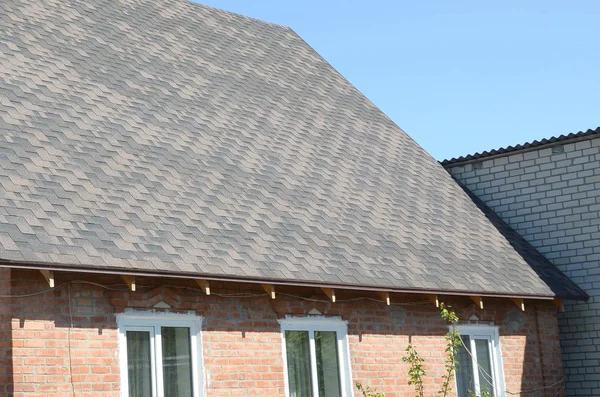Roof replacement is a common practice in building maintenance and renovation. However, what many people may not realize is that this process can have significant environmental implications. Traditional roofing materials such as asphalt shingles, metal sheets, or tiles are often non-recyclable and end up in landfills after their service life. Furthermore, the production of these materials involves intensive energy use and releases substantial amounts of greenhouse gases.
Asphalt shingles, for example, are petroleum-based products. The extraction and refining of petroleum contribute to air pollution and climate change. The manufacturing process also generates waste by-products that need proper disposal to avoid contaminating soil or water sources. Similarly, metal roofs require mining for raw materials such as copper or aluminum which results in habitat destruction and soil erosion.
The installation process itself can also be harmful to the environment. Roofing projects often involve stripping off old material before installing new ones – a task that creates large amounts of construction debris. If not properly managed, this waste could end up polluting local ecosystems.
Given these environmental concerns associated with roof replacement, it’s becoming increasingly important to consider sustainable alternatives when undertaking such projects.
One viable option is green roofing systems like living roofs or garden roofs. These types of roofs consist of a waterproof layer covered with growing medium where vegetation is planted—thus creating an insulating barrier against heat loss during winter months while cooling the building during summer through evapotranspiration.
In addition to reducing energy consumption for heating or cooling buildings, green roofs also help mitigate urban heat island effect—a phenomenon where city areas become significantly warmer than their rural surroundings due to human activities—by absorbing sunlight instead of reflecting it back into the atmosphere like conventional roofing materials do.
Another sustainable alternative is solar panel roofing which harnesses renewable energy from the sun thereby reducing reliance on fossil fuels for electricity generation.
Recycled roofing materials are another eco-friendly choice that minimizes resource depletion by reusing existing resources rather than extracting new ones. These materials come in a variety of forms including recycled metal, rubber or plastic composites that mimic traditional roofing aesthetics while offering similar durability.
Lastly, proper waste management during roof replacement can significantly reduce its environmental impact. This could involve recycling old roofing materials where facilities exist or disposing them responsibly to prevent pollution.
In conclusion, the environmental impact of roof replacement is significant but with careful consideration and planning, sustainable alternatives can be implemented to minimize these impacts. Whether it’s opting for green roofs, solar panels, recycled materials or practicing responsible waste management—every little effort helps in preserving our planet for future generations.
Elevation Construction LLC
202 S Johnson St, Ada, Ohio 45810
567-757-5725





